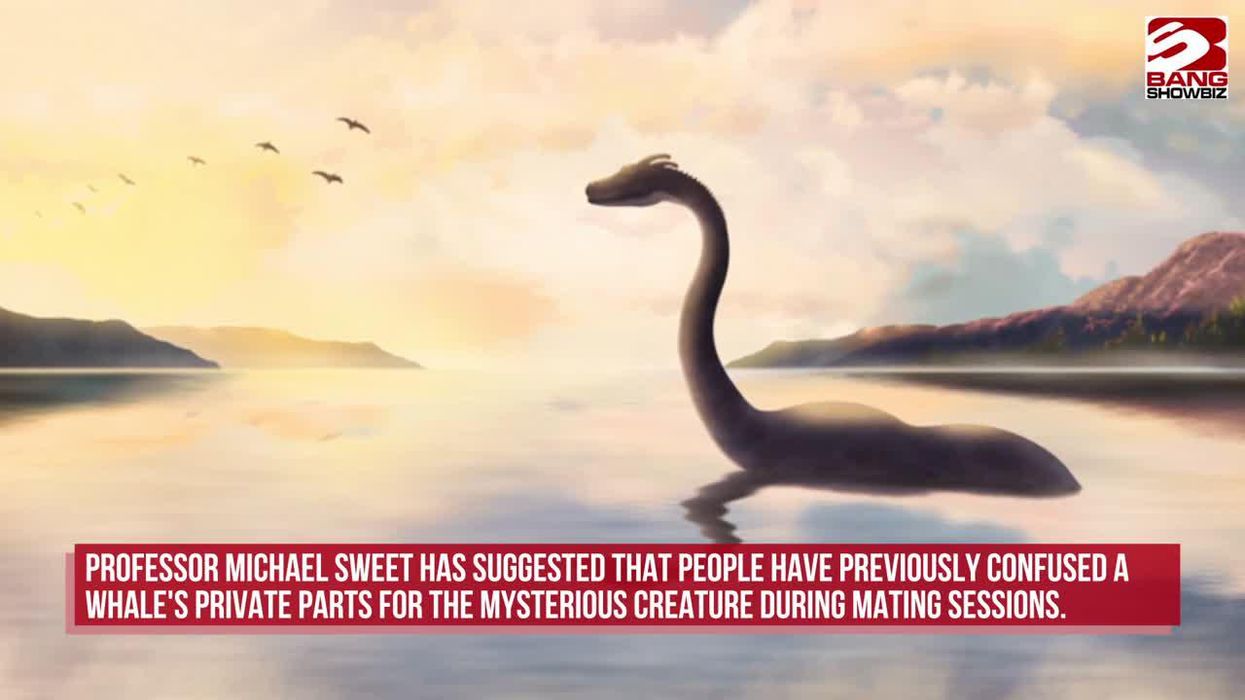Liam O'Dell
Apr 18, 2022
Loch Ness Monster could actually be a whale penis
BangShowbiz
In news which is more C**k Ness than Loch Ness, one academic has suggested the famous Scottish legend may actually just be a whale’s phallus – rather underwhelmingly.
Michael Sweet, a professor in molecular ecology at the University of Derby, penned a Twitter thread earlier this month, in which he explained why some people may have confused the sexual organ for something more mythical in nature.
He wrote: “Back in [the] day, travellers/explorers would draw what they saw. This is where many sea monster stories come from i.e. tentacled and alienesque appendages emerging from the water – giving belief to something more sinister lurking beneath.
“However, many cases it was just whale d***s.
“Whales often mate in groups so while one male is busy with the female the other male just pops his d*** out of the water while swimming around waiting his turn.
“Everyone’s gotta have a bit of fun, right?”
Sign up to our free Indy100 weekly newsletter
Ever immature, Twitter had a field day in the replies, and the tweet soon went viral.
There was a hidden message in Moby Dick's name— El mono de sofista \ud83e\udd9d (@El mono de sofista \ud83e\udd9d) 1649683994
So those krakens that sailors drew were just 15 male whales waiting their turn?— Harambee (@Harambee) 1649578978
I have enjoyed this Ted Talk.— Ben Solo\u2019s Undershirt (@Ben Solo\u2019s Undershirt) 1649557536
However, one response from another researcher suggested we should hold our horses – or in this case, whales.
Actually, in this instance, perhaps not.
Charles Paxton, from the University of St Andrews, replied: “Hi, author of the paper that started this. We never claimed (and I certainly do not believe) that many sea serpent reports came from sightings of whale penises. Only one or two.
“Also we never suggested this as an explanation for freshwater monsters as cetaceans (especially large ones) very seldom enter freshwaters.”
Hi, Author of the paper that started this. https://www.euppublishing.com/doi/abs/10.3366/anh.2005.32.1.1\u00a0\u2026 We never claimed (and I certainly do not believe) that many sea serpent reports came from sightings of whale penises. Only one or two. Another possible case is described here https://www.tandfonline.com/doi/full/10.1080/00253359.2021.1940521?src=\u00a0\u2026— Charles Paxton (@Charles Paxton) 1649606468
The abstract of the paper in question, published in the Archives of National History journal in April 2005, reads: “A re-evaluation of the ‘most dreadful monster’ originally described by the ‘Apostle of Greenland’ Hans Egede in 1741 suggests that the missionary’s son Paul probably saw an unfamiliar cetacean.
“The species seen was likely to have been a humpback whale, a North Atlantic right whale or one of the last remaining Atlantic grey whales either without flukes or possibly a male in a state of arousal.”
We would describe this theory as a letdown but feel that’s a poor choice of words given the subject matter.
Have your say in our news democracy. Click the upvote icon at the top of the page to help raise this article through the indy100 rankings.
Top 100
The Conversation (0)













